Premium Truck Bed Rubber Mat - Durable Slip-Resistant Protection
The global market for truck bed rubber mat solutions—spanning rubber mats for truck beds, rubber mats for pickup beds, rubber pickup bed mat, and rubber bed mat—continues to expand, driven by demanding logistics, automotive, petrochemical, and construction sectors. Whether for durability, corrosion protection, or operational safety, advanced rubber matting is now a vital supply chain asset.
This comprehensive guide delves into high-performance specifications, state-of-the-art manufacturing, quality benchmarks, application scenarios, leading manufacturer analysis, and actionable product comparisons including the High Density Light Truck Bed Rubber Mat 4mm 141.5×205cm C type. Industry trends, supported by standards such as ISO/TS 16949 and ANSI/NSF, ensure that your technical decisions are data-driven and secure.
According to Verified Market Research and Grand View Research, the global truck bed matting market surpassed USD 560 million in 2023, projected to reach over USD 780 million by 2028 at a steady CAGR of 6.2%. Rising adoption of rubber mats for truck beds is fueled by the expansion of e-commerce logistics, light commercial fleets, and stricter safety and sustainability regulations. Increasing customization demands—especially for pickup truck fleets—drive technological innovation and higher reliability standards.
Key Trends: Biobased elastomers, CNC-cut precision, modular mat layouts, ISO/FDA-compliant rubber formulations, and laser-engraved anti-slip surfaces.
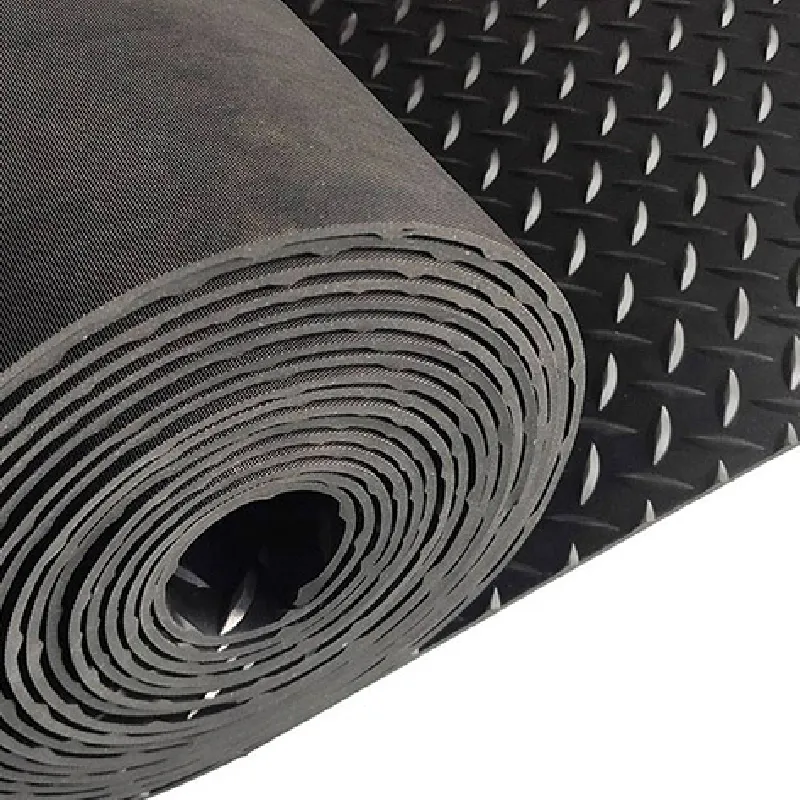
A truck bed rubber mat is an engineered layer of compounded elastomer, custom-cut to fit light and heavy-duty vehicle cargo beds. Designed to absorb impact, prevent load shifting, and protect underlying metal surfaces from abrasion, these mats are critical for transport safety compliance and operational cost savings.
Materials: High-density SBR (styrene-butadiene rubber), NR (natural rubber), and sometimes EPDM are common, offering:
- High tensile strength (≥10 MPa)
- Elongation at rupture from 200–400%
- Tear and oil resistance
- Long-term anti-UV and ozone stability
Design Features: Raised anti-slip treads; chamfered, CNC-trimmed edges; optional laser-engraved branding or fitment codes.
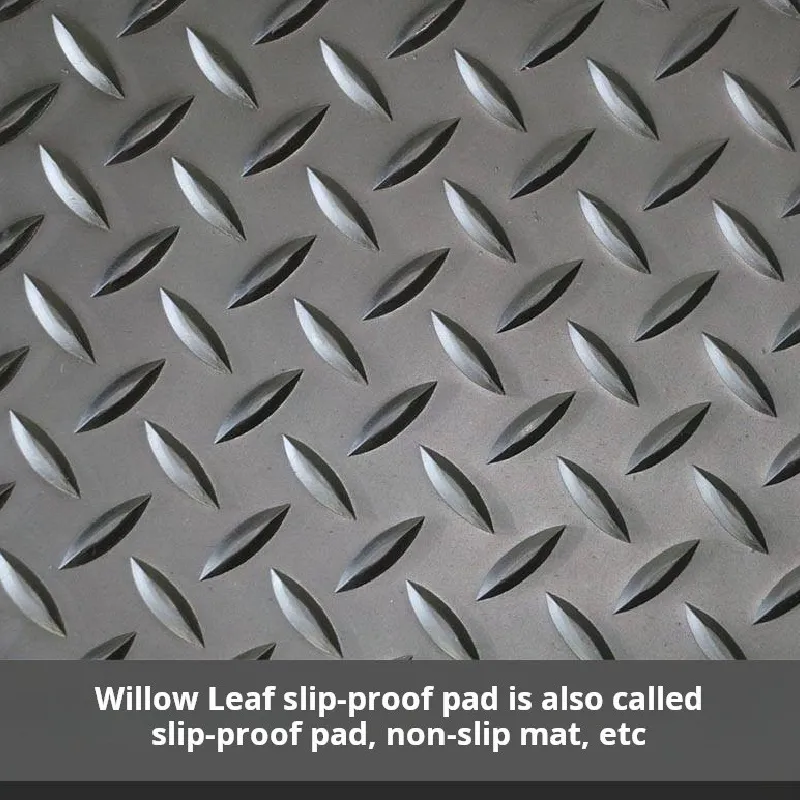
| Product Name | Material | Hardness (Shore A) | Thickness (mm) | Size (cm) | Tensile Strength (MPa) | Elongation (%) | Surface Design | ISO/ANSI Cert. | Warranty (years) |
|---|---|---|---|---|---|---|---|---|---|
| HD Light Truck Bed Rubber Mat 4mm 141.5×205cm C type | High-density SBR | 70±5 | 4.0 | 141.5×205 | ≥11.5 | ≥300 | Chevron/Anti-slip | ISO 9001, ISO/TS 16949 | 3 |
| K**o Liner Pro Bed Mat | NR/SBR blend | 65±8 | 3.5 | 132×195 | 9.5 | 260 | Ribbed | ANSI 237.2 | 2 |
| W**s Custom Cargo Bed Mat | NR/SBR + TPE | 75±5 | 5.0 | 150×212 | 10.2 | 310 | Cobblestone | ISO 14001 | 4 |
| D**o Impact HD Mat | Synthetic rubber | 68±6 | 3.0 | 138×200 | 8.1 | 250 | Grooved | ISO 9001 | 2 |
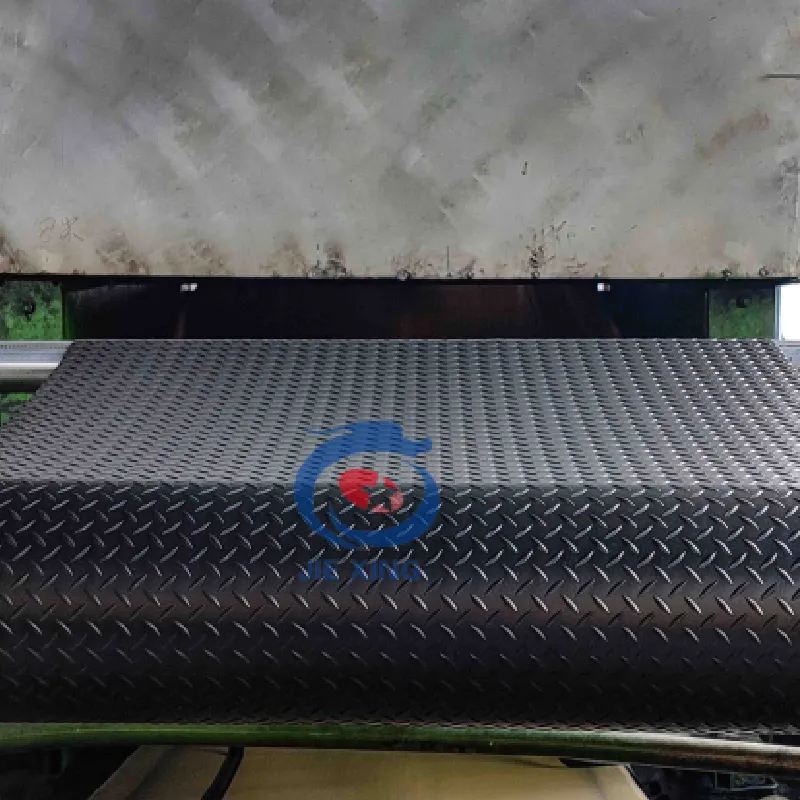
Modern truck bed rubber mat manufacturing implements strict quality and process controls, adhering to ISO 9001 and automotive ISO/TS 16949. The High Density Light Truck Bed Rubber Mat 4mm 141.5×205cm C type exemplifies advanced production that covers the following steps:
| Step | Description & Key Points | Standards/Certification |
| Raw Material Selection | Selection of premium SBR, carbon black, anti-aging agents; pre-mixed to guarantee chemical purity. | ISO/TS 16949, REACH |
| Mixing & Compounding | Precision mixing in batch kneaders; recipe calibration for mechanical strength and elasticity. | ASTM D3182 |
| Rolling & Molding | Rolled to 4mm (±0.2mm), followed by hot molding at 155–170°C for curing. | ISO 2781, ISO 37 |
| CNC Cutting | Laser-guided CNC accurately trims mats to 141.5×205cm, with chamfered edges for tight fit. | ISO 2768 |
| Surface Texturing | Anti-slip chevron or ribbed pattern imprinted onto mat, passes anti-skid friction testing. | DIN 51130 |
| Quality Inspection | Bench tests: Shore A hardness, tensile tests, oil/chemical immersion, durability fatigue. | ISO 868, ISO 48 |
| Packing & Logistic | Mats are rolled/folded, polybagged or boxed, barcode-labeled for traceability. | GS1, ISO 9001 |
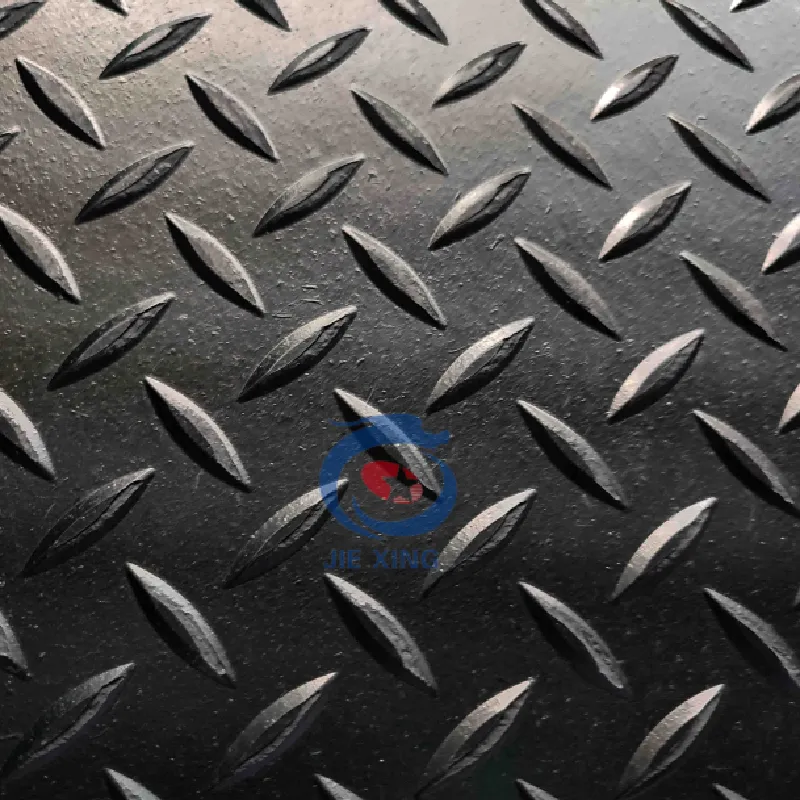
Superior Material Integrity
- High-density SBR compound: density 1.35 g/cm³ (ISO 2781), anti-oil and anti-freeze
- Shore hardness 70±5 for ideal cushioning and rib resilience
- UV + ozone shield: >1000hr exposure tested with no surface cracking (ISO 4892-3)
Precision Manufacturing
- CNC laser cutting & edge chamfering: fit accuracy ±1.5mm
- Anti-slip treads molded under 170°C for permanent adhesion
- ISO/TS 16949-compliant quality management
Performance in Demanding Industries
- Petrochemical: Resists fuel, oil, and alkali spillage (ASTM D471 tested)
- Metallurgy: Thermal cycling and impact absorption up to 5,000 cycles
- Municipal Water: Chlorine- and rust-resistant for tool transport
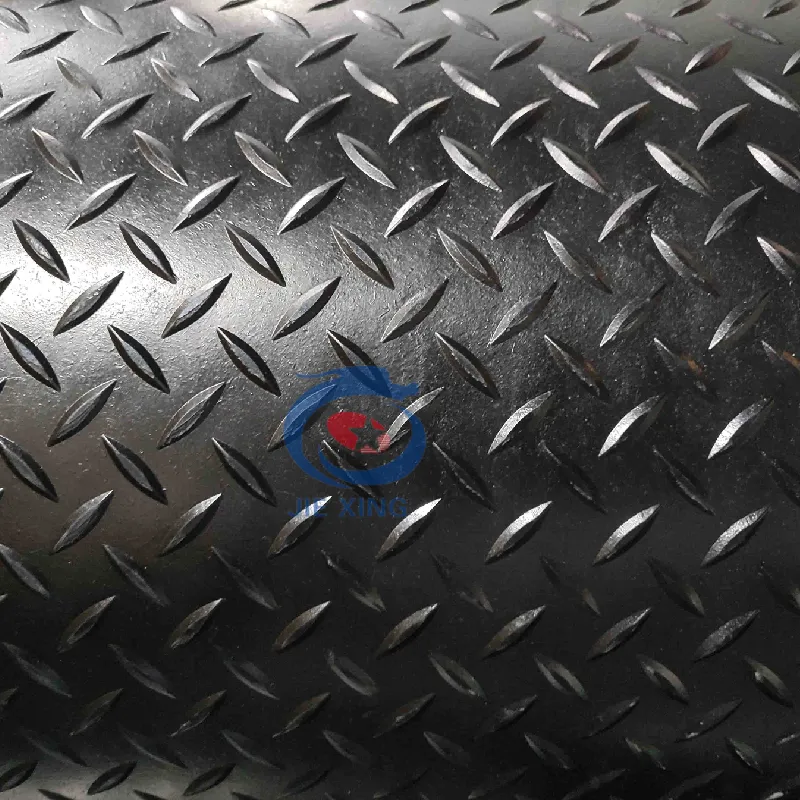
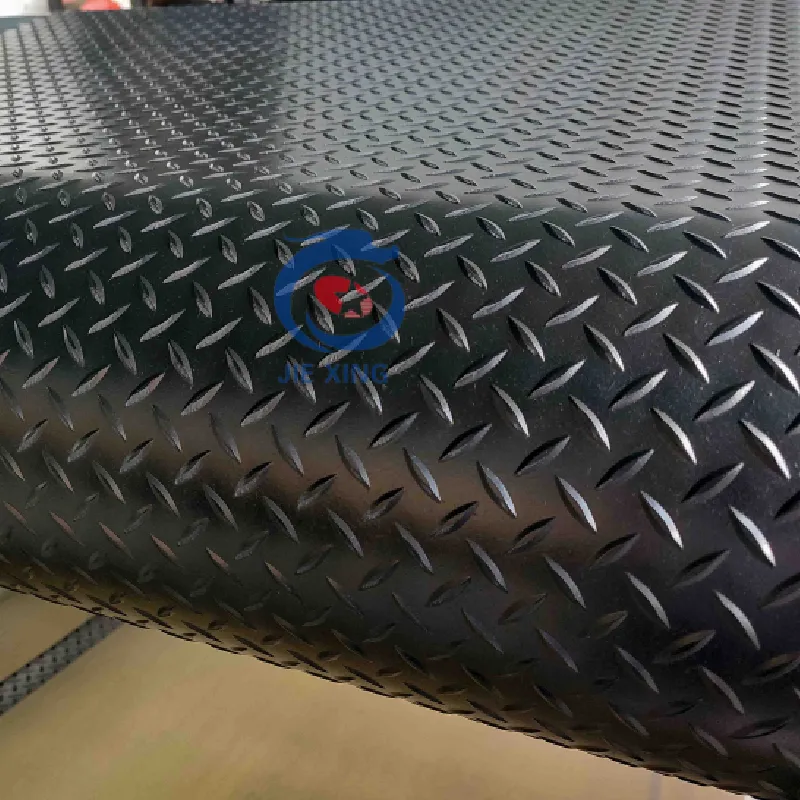
| Manufacturer | Annual Output (pcs) | Certifications | Key Clients | Years in Industry | Custom Service |
|---|---|---|---|---|---|
| QZSeals | 190,000+ | ISO 9001, ISO/TS 16949, TUV | SINOPEC, JMC Motors, Maersk | 26 | Full OEM/ODM |
| K**o Liners | 91,000 | ANSI, SGS | GAC Group | 18 | Semi-custom |
| W**s Mats | 73,500 | ISO 14001, RoHS | DFM, Yutong Bus | 15 | Partial OEM |
QZSeals leads with top-tier automotive certifications (ISO/TS 16949) and deep partnerships with global logistics, automotive, and petrochemical leaders since 1998.
- Material Adaptation: Select SBR, EPDM, NR for custom blend targeting chemical, oil, fuel resistance for specialized vehicle fleets.
- Dimension/Shape Customization: Laser/CNC processing for non-standard bed sizes, wheel arch jogs, and modular overlay patterns.
- Surface Engineering: Anti-slip chevron, ribbed, and logo/text engraving for enhanced branding or increased anti-skid standard (DIN 51130/R10+).
- Color & Branding: Multiple colorways, custom batch-labeling, UV ink logo or vehicle fleet serial embossing.

- Oil & Gas Utility Fleets: Rubber mats for truck beds used to protect vehicle beds from spillage and abrasion in field operations; feedback from SINOPEC logistics: zero rust spots after 2 years, reduced cargo sliding by 75%.
- Industrial Metallurgy Transport: Heavy-duty rubber pickup bed mat withstood high-temp equipment up to 110ºC; user report: loading/unloading cycles improved by 18% due to anti-slip patterns.
- Municipal Water Authorities: 300+ units of 4mm rubber bed mat supplied, with measured drop in manual work injury complaints. Cleaning time for beds reduced by 60%.
- Retail Distribution Fleet: Durable truck bed rubber mat extended mean bed repaint interval from 14 months to 37 months.

- Delivery Time: 7–15 business days for standard models, 20–28 days for custom/OEM orders (FOB/CIF worldwide shipping).
- Warranty: 3-year full replacement against manufacturing defects on the High Density Light Truck Bed Rubber Mat 4mm 141.5×205cm C type.
- Customer Support: 24/7 online chat, 12-hour response email support, and application engineering consultation.
- Certifications: ISO/TS 16949, RoHS, SGS, full traceable batch system.
- After-sales: Onsite technical guidance and rapid replacement in case of product issues (B2B contract valid).
Selecting the right truck bed rubber mat is more than a commodity choice—it's a strategic investment in vehicle longevity, operational safety, and cost control. Products such as the High Density Light Truck Bed Rubber Mat 4mm 141.5×205cm C type set new standards in durability and performance, validated by both rigorous laboratory testing (ISO, DIN, ASTM) and field experience. Whether for logistics, petrochemicals, or construction, engineered rubber mat solutions reliably protect cargo investments and streamline fleet maintenance.
For further technical depth, peer case studies, and industry updates, see discussions at:
- TruckMount Forums (Product use/field feedback)
- SAE Technical Paper: “Rubber Matting for Fleet Vehicle Durability”
- Surface & Coatings Tech Journal – Advances in Anti-slip Rubber Technologies (2024)
-
Under Door Draught Stopper: Essential ProtectionNewsJul.31,2025
-
Garage Door Seal and Weatherstrips for ProtectionNewsJul.31,2025
-
Edge Banding Tape for Perfect EdgesNewsJul.31,2025
-
Table Corner Guards and Wall Corner ProtectorsNewsJul.31,2025
-
Stair Nose Edging Trim and Tile Stair SolutionsNewsJul.31,2025
-
Truck Bed Rubber Mats for Pickup BedsNewsJul.31,2025
-
Window Weather Stripping for Noise ReductionNewsJul.29,2025